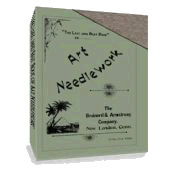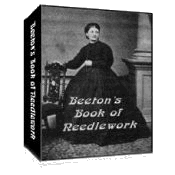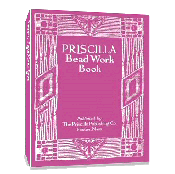Cretan Stitch
The Cretan stitch, and its variations, originated in Crete and the surrounding regions. For centuries women in this area have used this stitch to decorate clothing and household linens.
This very versatile stitch can be used to create beautiful borders with an open plait finish or it can be worked more closely to fill small leaves and flower petals. When worked closely, it gives the appearance of close plaiting. Beads and sequins can easily be added to it. It is also a popular stitch with makers of crazy quilts.
This stitch is also known as Persian stitch and Long-armed Feather Stitch. It is known as Quill Stitch when worked in a straight vertical line.
To work:
Draw two parallel lines, bring the needle from the under to the upper surface of the material, on the left-hand corner of the lowest line but one. The needle in working is always at right angles to these lines. Insert the needle in the top line slightly further to the right of where it came out on the bottom line, and take a small stitch downwards; then insert it in the bottom line and similarly take a small stitch upwards. In taking the stitch the thread must be kept to the left of the needle as in the illustration, or the plaiting will not take place.
The illustration below is drawn more openly than worked, in order to distinguish the threads.

Click on picture to see more detail.
The illustrations below show variations of the stitch.

Click on picture to see more detail.
Figure A. illustrates the common Closed Cretan Stitch.
Figure B. illustrations a variation of the Closed Cretan Stitch. The spacing of the stitches has been increased slightly and the needle is brought out on the center line each time. In this case, the needle is inserted diagonally.
Figure C. illustrates an Open Cretan Stitch worked horizontally. The movement is the same and the needle emerges a little to each side of the center line.
Figure D. shows the Open Cretan Stitch with the length of stitches varied, making it much more decorative.
Tips:
To help keep the stitches evenly spaced, use a basting stitch or an air or water soluble marking pen to mark guide lines.
This stitch must be worked using loose tension. It will be necessary to hold the loop of each stitch as you work until it is anchored down with the next stitch.
Return to top of Cretan Stitch page.
Return to Embroidery Stitches page.
Return to Home page.



 433 pages!
433 pages!

